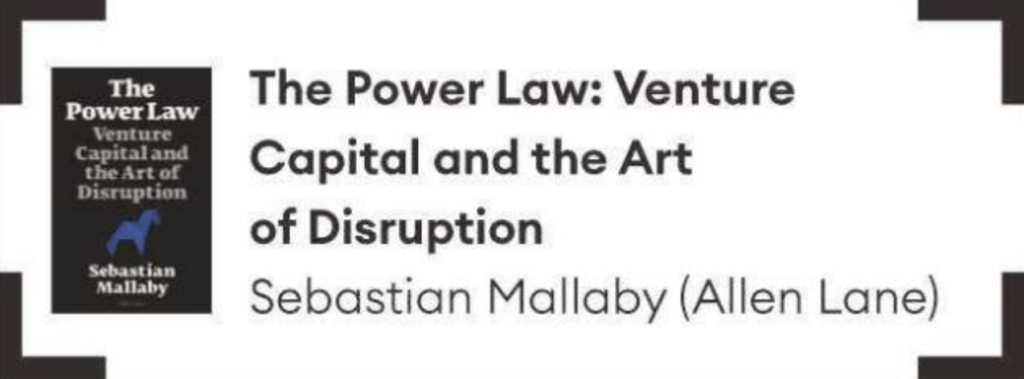Venture capital can help turbocharge disruptive ideas and create the businesses that will drive our future economic prosperity.
On a scale from one to ten, how interested would you be in a book about the history of specialist finance? In The Power Law, Sebastian Mallaby has produced the seemingly impossible – a well-researched and informative history of venture capital (VC), from its origins on the US West Coast to the present day, that is actually a page-turner, full of fascinating case studies and larger-than-life characters.
Mallaby cuts through some of the myths and misunderstandings about VC funds to explain what they are, what they do, and why they are worth paying attention to. In general, he explains, VCs are looking for opportunities to bankroll very bright, often young, highly-motivated founders with an idea for a new product or service that offers outstanding profitability and growth potential – ‘disruptors’. VC usually funds tech companies – but not exclusively. (The Moderna vaccine was VC-funded.)
VCs generally work in the same way. First, they identify an entrepreneur they wish to work with; networking and talent spotting is critical. In return for a share of equity, the VC makes capital available to the business long before it turns profitable. The VC sometimes uses its network to hire professional managers and source advice, to help create a stable business. This is often vital – most start-ups fail and the risk increases if the entrepreneur is inexperienced.
So why do VCs invest? Because of the ‘power law’. Although most VC investments will fail, a small number will hugely out-perform the majority. The idea is to develop a portfolio of high-risk, high-return bets. The few that succeed will pay for the losses (and then some). Risk is partially managed through a series of funding rounds: a business gets more money only if it meets certain targets. Fall short and it is allowed to fail. The skill lies in identifying those high-risk bets that have the potential for massive returns, then supporting the venture to the point it can be floated on a stock exchange – whereupon the VC takes a profit.
Why should we care about the fortunes of VC? Well, in part because they propel the rise of revolutionary ideas that can reshape the world for us all. In the 1950s, if you were young and ambitious and had a revolutionary business idea you had virtually no chance of realizing your dream, unless you had private wealth. You would have had to join a corporation, hoping to rise through the ranks as a ‘company man’. With VC, you might just be in with a chance.
VC is far from perfect, yet we surely need more, not less, to turbo-charge the revolutionary business ideas that will create the prosperity of the future. It is arguably needed in more places around the world: VCs are concentrated in particular hotspots. (Of the top ten VC centres in the world, six are in the US, three in China, and the other is London.) VCs really do identify hidden opportunities, given a sufficient supply of talent and ideas – which governments can help provide by attracting talented individuals to live and work in their countries, and supporting fundamental science and technology research.
Mallaby makes a complex topic understandable and accessible. He reminds us that the successes and failures of VC may have wider economic consequences than we first assume.
Piers Cain is a management consultant.


